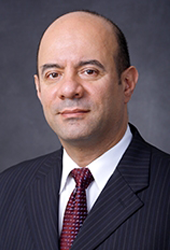
AJR November 2016

|
Hani H. Abujudeh
|
Article Description: A paradigm shift toward patient-centered care has prompted many physicians to reconsider their processes and approaches to delivering quality care. Radiologists are not immune to the shift as noted in this study, which provides imaging professionals a map to guide them through improved care and a satisfying patient experience.
A Patient Centered Radiology Quality Process Map: Opportunities and Solutions
1. How is patient centered care different from disease centered or more traditional care?
Patient centered care is a concept that shifts the focus from health care providers and the system to patients and their families. The Institutes of Medicine reinforced the concept’s importance in its 2001 report, Crossing the Quality Chasm: A New Health System for the 21st Century, which lists patient-centered care among six characteristics needed for an improved health care system (the others are: safety, effectiveness, timeliness, efficiency, and equity). If we embrace patient centered care, our health care system and our patients will benefit.
2. Why is the patient flow process map important in helping radiologists provide patient-centered care?
A patient-centered map helps us clearly visualize the gist of care at a glance. It helps us streamline the process in our radiology departments so that we can define, standardize, communicate and solve problems. I would like to think that the map is worth more than 1000 words.
3. Many recommendations discussed throughout the paper have a customer service-like undertone. Is this paradigm shift the result of value-based health care?
While many of us do not like to use the word “customer” in health care, we understand that patients are purchasing a service and they have customer service expectations. A person who provides good customer service is patient, positive, and attentive, with good communication skills. The person should also understand his/her craft, and have the ability to demonstrate calmness while ensuring a positive outcome. These skills are essential to patient-centered and value-based health care.
4. How can radiologists overcome the health care literacy barrier when discussing medical issues with patients?
Since patient health care literacy can impact the patient’s outcome, as radiologists we have to play a positive role in recognizing this and embracing the concept of improved communications. We need to participate in interdisciplinary teams that include experts in communications who can help us tailor health information to the specific population we serve.
5. Why are empathy and communication training so important for radiologists?
Part of being empathetic is validating or placing oneself in another person’s shoes. Many of us acquire these skills as we grow up, while others gain them through medical education. Unfortunately, these skills are not reinforced among radiologists who lack significant patient exposure. It is extremely important for radiologists to maintain this knowledge and skill-level throughout their careers.
6. Is there a disadvantage to patients having access to too much information via patient portals or the Internet?
Yes, having access to this information could be a disadvantage as a patient may read the radiology report before discussing it with his/her primary doctor, causing the patient to react with anxiety. In general, those disadvantages can be mitigated if we improve as radiologists while refining the systems we work in.
7. What’s the most important take-away message in this article?
Treat every patient as you would treat your mother. Work in a timely manner and decrease variation in your radiology health care delivery.
|
AJR InBrief ARCHIVE
Do you have a story idea for InPractice?
Contact Cheryl S. Merrill, Director of Publications, at cmerrill@arrs.org for more information.
|